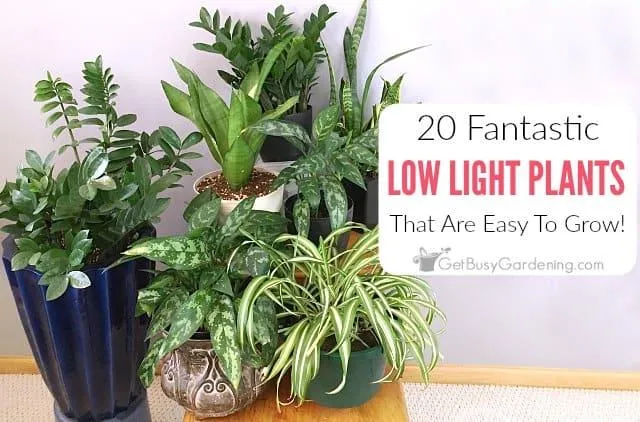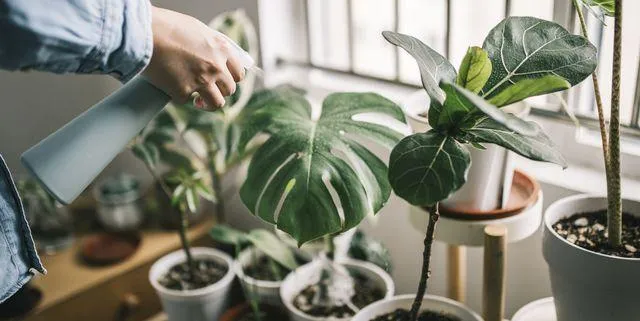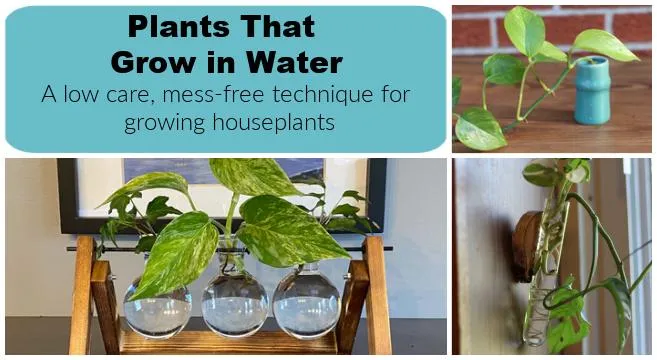Plants Perfect for Low-Light Areas
If you’re looking to add some greenery to a room that doesn’t get much natural light, you’ve come to the right place. In this article, I’ll cover various low-light tolerant houseplants and how to care for them so they thrive even with minimal sunshine.
Snake Plants
Sansevieria trifasciata, commonly called snake plant or mother-in-law’s tongue, is one of the toughest houseplants around. From my experience keeping several snake plants over the years, I can tell you they are practically unkillable! They can survive for weeks or even months with very little light.
Snake plants have thick, vertical leaves that point upwards which makes them perfect for placing in a darker corner. You’ll only need to water them once every 2-4 weeks. Their waxy leaves give them the ability to optimize what little water they receive. As a bonus, snake plants are excellent air purifiers and remove toxins like formaldehyde from the air.
Pothos
Any variety of Epipremnum aureum, commonly called pothos or devil’s ivy, is a wonderful choice for low-light conditions. Pothos vines will trail gracefully downwards and look great hanging from a shelf or basket. This plant can thrive in very low indirect light and only needs water when the top inch of soil dries out.
Like snake plants, pothos plants also help clean the air of toxins. From my experience, pothos plants are very Hardy and resilient to errors in care. Even if you forget to water them for longer than usual, they usually bounce back without any signs of distress. Their lush green variegated or solid green leaves make them a beautiful accent for any room.
Philodendron
Within the Philodendron genus, some great low-light options are philodendron hederaceum (Heartleaf philodendron), philodendron scandens (Brazilian philodendron), and philodendron selloum (Thaumatophyllum bipinnatifidum). These plants have thick, glossy leaves and vine gracefully.
In my experience caring for philodendrons, I’ve noticed they are very tolerant of low light as long as they receive indirect natural light for a few hours per day. They don’t need to be watered as often as pothos and will communicate their needs clearly by slightly drooping leaves. Philodendrons purify indoor air and add beautiful greenery to shaded spots.

Chinese Evergreens
Various cultivars within the Aglaonema genus like A. silver queen, A. mariettae, and A. commutatum are wonderful choices for low-light conditions. Chinese evergreens (as they are commonly called) have beautiful variegated or colorful leaves that stand up well on their own without clinging support.
From my experience, Chinese evergreens thrive best with only indirect light away from direct sunshine, which can scorch their leaves. These plants are drought tolerant and like to dry out slightly between waterings. Any bright variegated Chinese evergreen will light up a dark corner with its lovely foliage.
Cast Iron Plant
The aptly named Aspidistra elatior is about as tough as houseplants come. They can withstand very low light, infrequent watering, and a wide range of temperatures. Cast iron plants earned their moniker because they are practically indestructible!
In my garden, I have a cast iron plant that has survived over 30 years in very shady conditions with no care whatsoever. Their thick leaves stand straight up and remain lushly green regardless of light level. Cast iron plants clean indoor air and make an easy-care addition to low-light areas. They don’t mind if you forget about them for a while!
ZZ Plant
With strappy green leaves that can grow over 3 feet tall, Zamioculcas zamiifolia or ZZ plant is a real showstopper that thrives in very low light. ZZ plants store water in their thick rhizomes and stems, allowing them to go weeks without watering before they show any thirst signs.
My ZZ plant has survived next to an extremely dark basement window, getting literally no direct sunlight at all! It remains healthy and happily pushes out new stalks. The ZZ plant tolerates low humidity well too. It’s one of the most carefree and durable houseplants you can find for low-light spots.
-
Peace Lily
Peace lilies, or Spathiphyllum, love humidity but are also very shade tolerant. They indicate when they need water by dropping their white spathes. Peace lilies truly live up to their name by being low-maintenance beauties for dimly lit rooms.

-
Dracaena
There are many Dracaena varieties suitable for low light like D. marginata, D. fragrans, D. sanderiana, and D. deremensis. They have attractive variegated or long strappy leaves and survive with occasional indirect light and infrequent watering. Dracaenas release oxygen and have a graceful structural form.
-
Chinese Lucky Bamboo
Dracaena sanderiana, more commonly called lucky bamboo, tolerates very low light and thrive in water culture without soil. Their slim canes segmented with lush leaves make a nice focal point anywhere in low light. Lucky bamboo is said to bestow good fortune too!
Tips for Low-Light Plant Care:
– Water only when the top 1-2 inches of soil are dry. Err on the side of under-watering for plants in low light.
– Fertilize every few months in the spring and summer using a diluted liquid houseplant fertilizer. These plants don’t require much in the way of nutrients.
– Provide indirect natural lighting near an unobstructed window if possible, even if just for a few hours per day.
– Wipe leaves occasionally with a damp cloth to remove dust. Many of these plants store water in their leaves and dust cuts down on transpiration and photosynthesis, especially in low light conditions.
– Move plants around a little every month or so to optimize exposure to any light sources. Rotate pots if plants lean towards one side over time.

– Divide/repot vigorously growing plants every 2-3 years or when roots fill the container to encourage continuous healthy growth.
– Trim off any unsightly brown or wilted leaves as needed while the plant establishes itself in a new environment.
The key with low-light houseplants is going slowly and allowing them to dry out thoroughly between waterings. Observe each plant’s individual needs rather than following a rigid schedule. With the right choices and care, you can add thriving greenery even without lots of natural sunshine. Let me know if you have any other questions!
Low Light Indoor Plants
| Plant | Sunlight Needs | Water Needs | Growth Rate |
|---|---|---|---|
| Pothos | Low, tolerates low light | Allow soil to dry slightly between waterings | Fast growing |
| Snake plant | Low, tolerates very low light | Allow soil to dry out partially between waterings | Slow growing |
| Chinese evergreen | Low, tolerates low indirect light | Keep soil moist | Moderate |
| Philodendron | Low, tolerates low light | Allow soil to partially dry between waterings | Moderate |
| Peace lily | Low, tolerates very low light | Keep soil moist | Moderate |
FAQ
-
What plants need little sunlight?
Some plants that basically need very small amounts of sunlight include Chinese evergreen, snake plant, peace lily, pothos, philodendron, spider plant, and ZZ plant. These plants can develop just fine in low light conditions, sort of getting what sunlight they can get.
-
Do succulents need sunlight?
While succulents don’t require as much sunlight as most other kinds of plants, they still need some light to survive. Succulents stored in low-light areas may become stretched out and leggy trying to reach for more illumination. These plump plants need a sunny spot close to a south or west facing window to prosper.
-
Can peace lilies tolerate low light?
Peace lilies can manage in low light better than most other houseplants. They seem to adapt well to dull indoor settings near north-facing windows or other dimly lit spots. However, peace lilies placed in very low light may become pale and leggy over time as they struggle to carry out photosynthesis. So a somewhat bright area is best for peace lilies to stay compact and colorful.
-
What is the lowest light houseplant?
The snake plant, or mother-in-law’s tongue, might take the prize as the houseplant that can survive in the lowest light conditions. Snake plants are practically legendary for their ability to withstand neglect, dust, and very dim indoor settings like office spaces under fluorescent lights. They basically live on air and do astonishingly well in locations that would kill off other plants. So if you’re searching for the tropical plant champion of low light, the snake plant fits the bill.

-
Should pothos be in low light?
Despite pothos vines being used extensively as hanging decorative plants, they also work well in low light situations on tabletops or bookshelves. Pothos can endure very low illumination and may survive for months with just sunlight from a northern exposure. That said, pothos grown in dimmer spots may develop pale yellow or light green leaves and vine slower compared to if basking in brighter indirect sunlight. So while tolerant of low light, pothos thrives most with some brighter ambient indoor lighting.
-
Do cast iron plants need sunlight?
Cast iron plants, known for being tough as nails, can tolerate very low light. They may develop somewhat slower in the shade and stay more compact than if given some direct sun. However, cast iron plants appear content in locations getting just a few hours of weak sunlight every week or so. Their stunted but healthy growth in low light conditions has earned them respect as survivors that stubbornly endure darkness that would destroy most any other houseplant. So cast iron plants need scarcely any direct sun rays to look fine for years.
